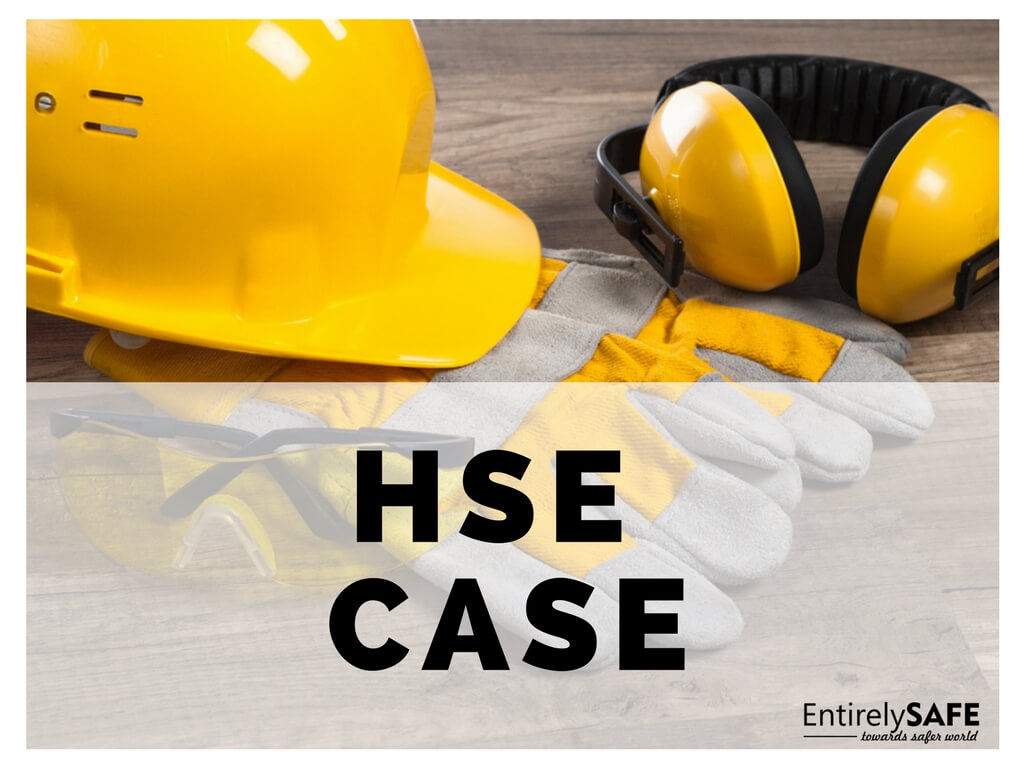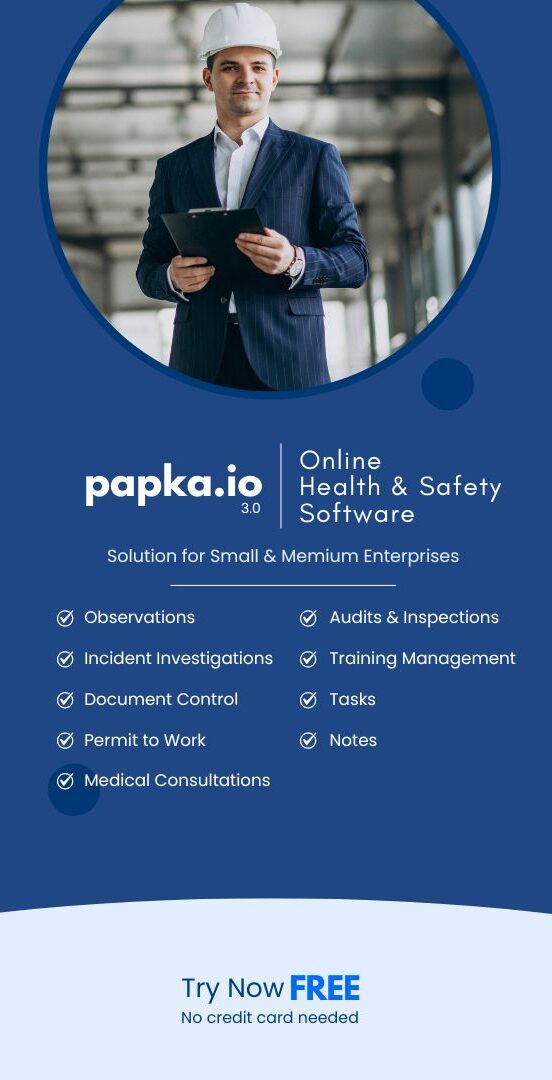HSE Case for Land Rigs

HSE Case Content
PART 1 HSE Case Introduction
PART 2 Drilling Contractor’s HSE Management System
PART 3 Rig Description and Supporting Information
PART 4 Risk Management
PART 5 Emergency Response
PART 6 Performance Monitoring
Appendix 1 Reference Documents
Appendix 2 Abbreviations, Acronyms & Definitions
Appendix 3 Drawings & Schematics
Appendix 4 National Regulatory Index
PART 1 – HSE Case Introduction
- 1.2.1 Senior Management Demonstration
- 1.2.2 HSE Case Scope and Arrangements
- 1.2.3 Drilling Contractor Overview
- 1.2.4 HSE Case Responsibilities
- 1.2.5 HSE Case Reviews and Updates
- 1.2.6 Continuous Improvement
- 1.2.7 Action Plan / Recommendations
- 1.2.8 HSE Case Presentation
- 1.2.9 Regulatory Requirements
- 1.2.10 HSE Management
- 1.2.11 Environmental Impact and Aspect Assessments
- 1.2.12 Justification for Continued Operation
PART 2 – Drilling Contractor’s HSE Management System
2.0 INTRODUCTION
- 2.0.1 Management System Elements
- 2.0.2 Environmental, Health and Safety Standards (ISO 14001 and OHSAS 18001)
- 2.0.3 Core Business Functions
- 2.0.4 Demonstrating Assurance of HSE Management Objectives
- 2.0.5 HSE Management Objectives
2.1 POLICIES AND OBJECTIVES
- 2.1.1 Policies
- 2.1.2 Objectives
2.2 ORANISATION, RESPONSIBILITIES, AND RESOURCES
- 2.2.1 Organization
- 2.2.1.1 Organization
- 2.2.1.2 Document Management
- 2.2.1.3 Workforce Participation
- 2.2.1.4 Rig Organization
- 2.2.2 Responsibilities
- 2.2.2.1 Senior Management Responsibilities
- 2.2.2.2 Line Management Responsibilities
- 2.2.2.3 Individual Responsibility and Authority
- 2.2.2.4 Regulatory Requirements
- 2.2.3 Resources
- 2.2.3.1 HSE Resources
- 2.2.3.2 HSE Committee Representation
- 2.2.3.3 Support
- 2.2.3.4 Clients
- 2.2.3.5 Client’s Third Parties
- 2.2.3.6 Catering and Accommodation
- 2.2.3.7 Medical Support
- 2.2.4 Competence
- 2.2.4.1 Selection of Drilling Contractor’s Personnel
- 2.2.4.2 Selection of Contractor Personnel
- 2.2.4.3 Competence Assessment and Records
- 2.2.4.4 Training
- 2.2.4.5 Induction Program
2.3 STANDARDS AND PROCEDURES
- 2.3.1 Planning and Risk Management
- 2.3.2 Management of Change
- 2.3.3 Emergency Response
- 2.3.4 Permit to Work System
- 2.3.5 Safe Working Practices
- 2.3.6 Environmental Management
- 2.3.6.1 Environmental Protection
- 2.3.6.2 Management of Waste
- 2.3.7 Occupational Health
- 2.3.8 HSE Procedures
- 2.3.9 HSE Communication
- 2.3.10 HSE Alerts and Bulletins
- 2.3.11 Rig Security
- 2.3.12 Drilling and Well Control Operations
- 2.3.12.1 Simultaneous and Combined Operations
- 2.3.12.1.1 Drilling Contractor – Client HSE Management Interfaces
- 2.3.12.1.2 Simultaneous and Combined Operations Risk Assessments
- 2.3.12.1 Simultaneous and Combined Operations
- 2.3.13 Transport Operations and Site Assessment
- 2.3.13.1 Adverse Weather
- 2.3.13.2 Support Units
- 2.3.14 Engineering Management
- 2.3.15 Lifting Operations and Material Handling
- 2.3.16 Logistics Management
- 2.3.16.1 Personnel Tracking
- 2.3.16.2 Transport Operations
- 2.3.17 Hazardous and Radioactive Substances
- 2.3.18 Procurement Management
- 2.3.19 Maintenance Management
- 2.3.20 Sub-Contractor Management
2.4 PERFORMANCE MONITORING
- 2.4.1 Periodic Monitoring
- 2.4.2 Incident Reporting and Analysis
- 2.4.3 Behavior-based Observation Systems
- 2.4.4 Environmental Monitoring and Measurement
- 2.4.5 Audit and Audit Compliance
- 2.4.6 Verification of HSE Critical Activities/Tasks and Equipment/Systems
- 2.4.7 Certification
2.5 MANAGEMENT REVIEW AND IMPROVEMENT
- 2.5.1 Review
2.6 ATTACHMENTS
PART 3 – Rig Description and Supporting Information
3.0 INTRODUCTION
- HSE Equipment and Systems
3.1 GENERAL INFORMATION
- 3.1.1 Rig / Unit Details
- 3.1.2 Certification
- 3.1.3 Rig / Unit Moves including Rigging Up / Down
- 3.1.4 Rig / Unit Layout
- 3.1.5 Major Modifications and Upgrades
- 3.1.6 Selection of HSE Critical Equipment/Systems
- 3.1.7 Land Transportation
3.2 PRIMARY STRUCTURE
- 3.2.1 Operating Limits/Design Criteria
- 3.2.2 Structural Integrity
- 3.2.3 Foundation Stability (generic details only, final information included in location
- specific document
3.3 DRILLING, COMPLETION AND WELL CONTROL
- 3.3.1 Hoisting and Pipe Handling
- 3.3.2 Mud System
- 3.3.3 Blow Out Preventer (BOP) Systems
3.4 PLANT AND UTILITIES
- 3.4.1 Power Generation and Distribution
- 3.4.2 Fuel/Lube Oil System
- 3.4.3 Rig / Unit Air System
- 3.4.4 Heating, Ventilation and or Air Conditioning Systems (generic details only where applicable; final information included in location specific document)
- 3.4.5 Drain, Effluent and Waste Systems (generic details only where applicable; final information included in location specific document)
- 3.4.6 Communications
- 3.4.7 Emergency Lighting
- 3.4.8 Lifting Equipment and Material Handling
- 3.4.9 Storing and Handling of Explosives/Flammables and Other Hazardous Substances (generic details only where applicable; final information included in location specific document)
3.5 FIRE AND EXPLOSION PROTECTION
- 3.5.1 Hazardous Area Classifications
- 3.5.2 Detection Systems
- 3.5.3 Emergency Shut Down Systems
- 3.5.4 Active Fire Protection
- 3.5.5 Passive Fire Protection (where applicable)
3.6 EMERGENCY SYSTEMS
3.7 ACCOMMODATION / CAMP SITE
- Generic details only where applicable; final information included in location specific document
3.8 WELL TESTING
3.9 OTHER THIRD PARTY EQUIPMENT
- Recommended Drawing List
PART 4 – Risk Management
4.1 INTRODUCTION
- 4.1.1 Integrating HSE Management into Operations
- 4.1.2 Inter-relation of Hazards and Operations
4.2 RISK MANAGEMENT PROCESS OVERVIEW
- 4.2.1 Relationship of Risk Management Terms – ISO
- 4.2.2 Risk Management Process – ISO 17776
- 4.2.3 Structured Hazard Identification and Control Process (SHIDAC)
4.3 STRUCTURED HAZARD IDENTIFICATION AND CONTROL PROCESS (SHIDAC) STEPS
- 4.3.1 SHIDAC Step 1 – Identify Hazards
- 4.3.2 SHIDAC Step 2 – Evaluate Risk
- 4.3.3 SHIDAC Step 3 – Identify Risk Reduction Measures and Set Functional Requirements
4.4 IDENTIFICATION OF HAZARDS AND SOURCES OF HAZARDS
- 4.4.1 Acute and Chronic Hazards
- 4.4.2 Environmental Aspects and Health Hazards
- 4.4.3 Hazard and Source Identification Techniques
4.5 RISK ESTIMATION
- 4.5.1 The Risk Assessment Matrix
- 4.5.2 Screening Criteria
4.6 RISK EVALUATION
- 4.6.1 Tolerability of Risk
- 4.6.2 Screening Criteria and Significance
- 4.6.3 Interrelation of Major Hazards and Events
4.7 RISK TREATMENT
- 4.7.1 Risk Optimization Hierarchy
- 4.7.2 Risk Optimization Strategies
- 4.7.3 Summary of Operation Boundaries (SOOB) – Combined Operations
4.8 RISK ACCEPTANCE
4.9 RISK COMMUNICATION
- 4.9.1 Drilling Contractor’s Scope of Operation
- 4.9.2 Workforce Communication to Drilling Contractor Senior Management
- 4.9.3 Monitoring and Verification
- 4.9.4 Feedback to the Drilling Contractor Management System
PART 5 – Emergency Response
5.1 EMERGENCY RESPONSE MANAGEMENT
- 5.1.1 Emergency Response Philosophy
- 5.1.2 Emergency Response Analysis
- 5.1.3 Emergency Response Plan
5.2 COMMAND AND COMMUNICATION
- 5.2.1 Command During Emergencies
- 5.2.2 External Emergency Response Support
- 5.2.3 Communications
5.3 TRAINING FOR EMERGENCIES
- 5.3.1 Emergency Response Training
- 5.3.2 Drills and Exercises
- 5.3.3 HSE Inductions
5.4 DETAILS OF EMERGENCY EQUIPMENT
- 5.4.1 Emergency Systems
- 5.4.2 Means of Recovery to a Place of Safety
PART 6 – Performance Monitoring
6.1 PERFORMANCE MONITORING
6.2 PERIODIC MONITORING
- 6.2.1 Incident Reporting and Analysis
- 6.2.2 Behavior-Based Observation Systems
- 6.2.3 Health/Environmental Monitoring and Measurement
6.3 AUDIT AND AUDIT COMPLIANCE
6.4 VERIFICATION OF HSE CRITICAL ACTIVITIES/TASKS AND EQUIPMENT/SYSTEM
6.5 CERTIFICATION

